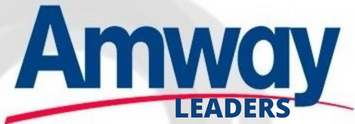No crosslinking was one of the extremely dumb and hypocritical things that upline taught the group. In other words, you weren't supposed to talk about business with other business owners if you had a different sponsor or upline diamond. This is ridiculous because talking to other small company owners is an excellent method to learn new strategies and gain advice.
Why are IBOs required to attend (and pay for) meetings when a cross-line diamond is speaking if that is not the case? Why would IBOs pay for audios of cross-line speakers telling them about the company? The assumption is that the cross line doesn't have a direct stake in your Amway firm, but it appears that cross lining is ok as long as your upline benefits.
The true reason the diamonds don't want you talking to others is that the entire truth could be revealed. That you may have devoted yourself to Amway and the methods for years, doing all that was expected of you, only to lose money. Or that you followed your upline's instructions to the letter but were still unable to sponsor a single downline.
Another possibility is that the rank and file will compare what they've been taught and realize they've been duped. I once had a conversation with a cross-line IBO, and it was then that I realized how ridiculous some of our methods were. In the ancient days, I was an IBO who would take orders and pick up the merchandise. Because you had to travel to your sponsor's house and read off your list while they filled your order, our group's practice took hours and hours. My cross-line acquaintance said that their upline simply put everything in a box and recorded everything that had not yet been completed. You paid and were gone in a matter of minutes.
As a result, this is merely another example of upline's poor business practices being taught and maintained. But the fundamental reason is that they don't want the employees to speak up about what's actually going on in the company. When you're being taught this way, you're better off running as fast as you can in the opposite direction.
The policy of not permitting any electrical, plumbing, or HVAC lines to cross over each other is referred to as "no crosslining," and the term "no crosslining" is a term that refers to the practice. It is a fundamental idea that underpins both the design and construction of buildings and serves the purpose of assuring the security and effectiveness of building systems.
Crosslining is an issue since it can result in safety hazards such as electrical fires, water leaks, or gas leaks. Additionally, crosslining can waste time and money. In addition to this, it may lead to an inefficient use of space because crossing lines may reduce one's capacity to access or service particular systems. Because of this, maintaining a structure in accordance with the "no crosslining" principle is essential to ensuring its durability and security.
Crosslining can increase the chance of electrical shorts, which can lead to fires if they occur in the context of electrical lines. It is possible for electrical wires to become damaged due to heat, moisture, or corrosion if they cross over plumbing or HVAC lines, which can lead to potential electrical dangers. When installing electrical lines, electricians are required to adhere to stringent guidelines and ensure that no other systems are blocking the path of the electrical lines in order to reduce the likelihood of the risks described above.
of a similar vein, crosslining of plumbing lines might result in major difficulties for the homeowner. In the case that there is an electrical short or failure, for instance, a water supply line that passes over an electrical line can result in damage to the water supply in the event of the electrical short. If, on the other hand, a drain line were to cross over an electrical line, this may result in water leaks in addition to potential electrical concerns. Because of this, plumbers are required to construct plumbing lines in accordance with stringent requirements and must guarantee that the lines do not intersect with those of other systems.
In the case of heating, ventilation, and air conditioning (HVAC), the no crosslining concept also applies. If HVAC lines, such as ducts or pipes, cross over other systems, they run the risk of becoming obstructed or damaged. This can result in inefficient heating or cooling, increased energy consumption, and higher operating costs. In addition, if the piping for the HVAC system is not installed correctly, it may result in the accumulation of mold or other pollutants, both of which may pose a threat to a person's health. Because of this, HVAC professionals have a responsibility to guarantee that their systems are installed properly and that they do not interfere with the functioning of other systems.
In a nutshell, adhering to the "no crosslining" guideline is critical to guaranteeing the security and efficacy of the various construction systems. It is of the utmost importance that all experts involved in the design and construction of buildings adhere to stringent standards and regulations in order to avoid the crossing of lines that control the building's electrical, plumbing, or HVAC systems. By following to these principles, we will be able to design and construct long-lasting structures that are secure, energy-efficient, and environmentally friendly.










